As we commemorate the 100th anniversary of United States entry into World War I, I share this story about a group of World War I photographs. About 25 years ago, at a photo show featuring old images, I came across a wooden box filled with glass stereoviews. Stereoviews are side by side images of the same scene, photographed through twin lenses approximately as far apart as the eyes of a typical person, so that, when looked at in a special two lens viewer, they appear to be three dimensional (3D). These views looked interesting–a parade, soldiers, etc. They were in great shape–very clear and unscratched–and the price was right. So I bought them.
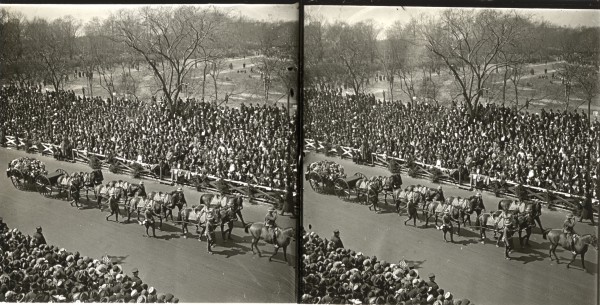

Here’s the box that the views came in, with its handwritten label:
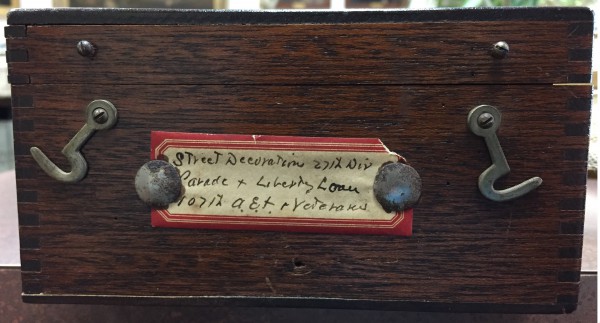
It did appear that the men shown in the parade might be World War I soldiers. But I wasn’t sure, until recently, what the occasion was. Several times over the years I searched The New York Times for the answer–with no success. But, recently I tried several variations of what looked to me like “271th” on the first line of the label. Finally, I recently found this article that appeared on the front page of the Times of March 25, 1919, with its headline:
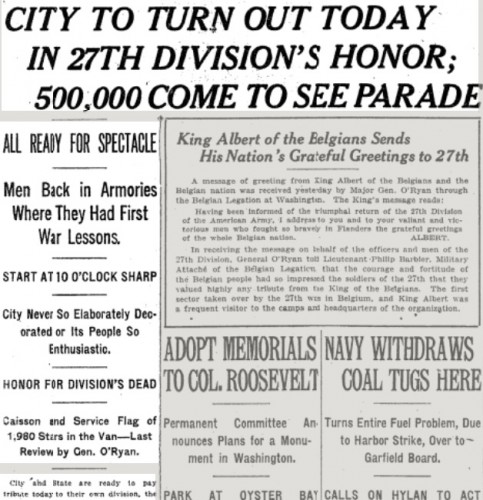
So, with this information, I was able to determine that the label on the box actually reads: “Street Decoration 27th Division Parade + Liberty Loan 107th A.E.F. Veterans.” The 107th Regiment of the New York National Guard was established in 1917, and traces its history back to the old 7th Regiment of the New York State Militia. “A.E.F.” here stands for American Expeditionary Force, the army of 2 million Americans who went off to France to fight with the British and the French armies against the Germans. Liberty loans were sold to American citizens; they were to help the United States government finance the war and were to be repaid several years after its end.
As I researched further, it soon became apparent that extensive preparations had been made for this celebration (in the words of The Times subhead above, “City Never So Elaborately Decorated”) of victory and those who fought, had been injured, and died for their country. Decorations in Manhattan included a tank, artillery guns and shells, murals, and sculptures. Here are some of the most interesting images from this collection, taken on or about March 26, 1919, reproduced below as half-stereoviews (rather than stereoviews–readers of this blog post would not be able to get the 3D effect of these images, even if they were reproduced here in full; a viewer such as that above is needed to do so):
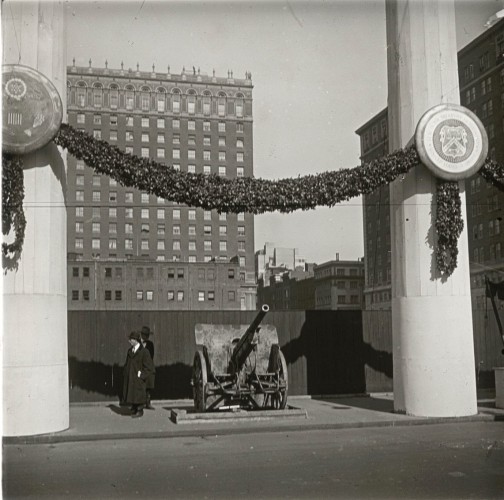
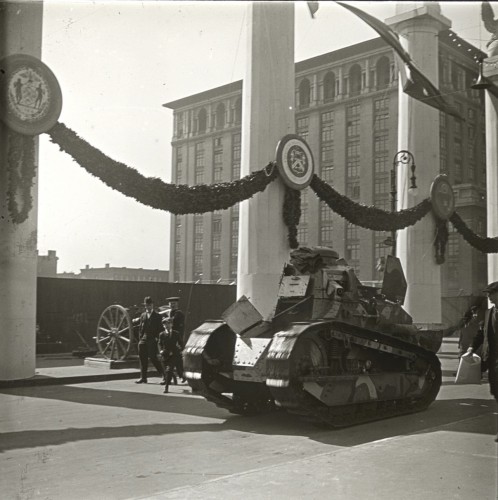
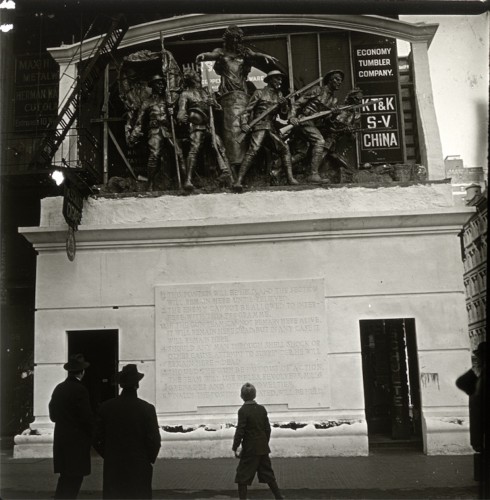
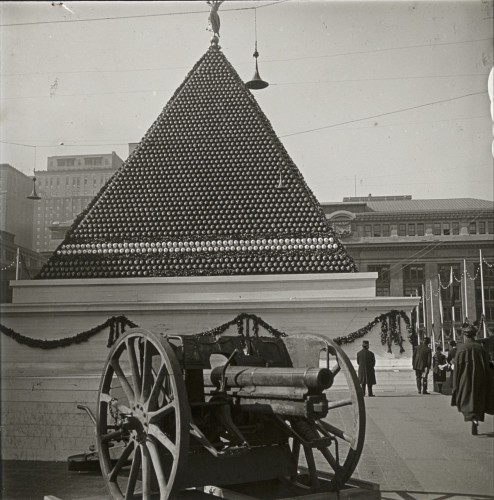

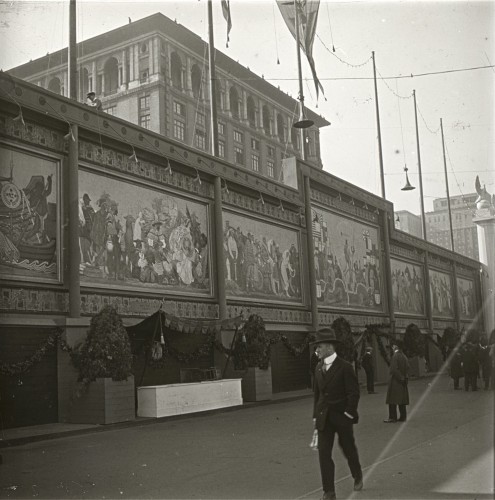
The Times reported that the parade was to honor the 27th Division, largely composed of soldiers from New York State. Those soldiers had fought beside their British comrades and had broken the German’s “impregnable” Hindenburg Line. It was estimated that half a million people had flooded into Manhattan, on the night before the parade, to watch it. The parade, featuring 27,000 veterans, would be proceeding up Fifth Avenue. “The decorations along the line of march and throughout the city that will typify to the fighters of the division the joy upon their return were completed last night.” Grandstands had been erected from 60th Street to 110th Street. A Red Cross contingent would also be marching, albeit at the tail end of the parade. Artillery regiments would not be marching with their guns; those had been left in France. No machine-gunners would be carrying their weapons. Soldiers would be marching with a light pack, full canteen, gas mask, rifle or sidearm, and steel helmet. The Salvation Army would be distributing 50,000 Chateau Thierry donuts, coffee, and chocolate along the route. The police had reserved specified corners on which wounded soldiers could gather.
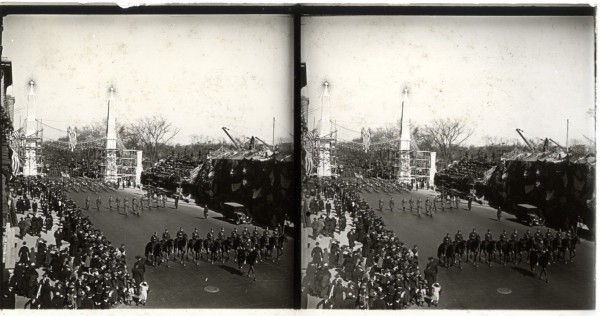
The day after the parade, here are the The New York Times headlines:
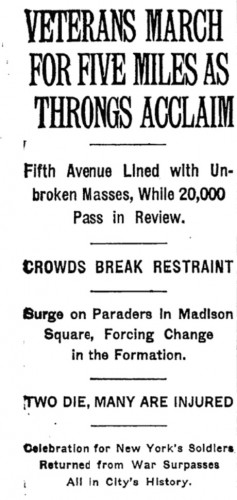
The Times reported that never before had such large crowds gathered in New York City–or anywhere else in the United States. Near Madison Square, where the Victory Arch had been erected, the enthusiastic crowd had surged forward, blocking the parade route; police had had their hands full clearing a narrow path so that the parade could continue–with the soldiers proceeding through the crowd in rows of 4, rather than as platoons, as had been planned.

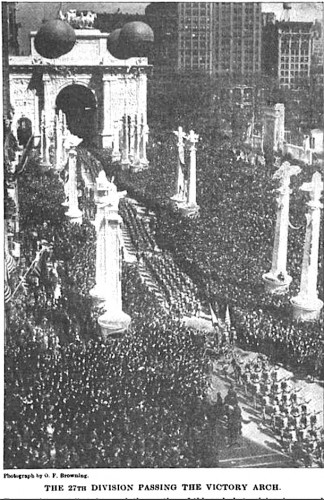
More than 400 automobiles carried the wounded of the 27th, several in each car, up the parade route. The grateful crowd threw candy and cigarettes into the vehicles. A contingent of Australian soldiers, in their distinctive uniforms, marched the route. Mascots–a Scotch Terrier and a French goat–marched as well.
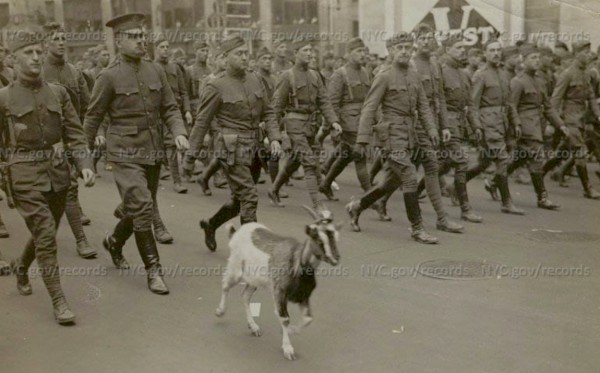
Planes flew low over the parade route. At 60th Street, the Arch of Jewels marked the entrance to the part of the parade route lined on both sides with massive crowds seated in bleachers.
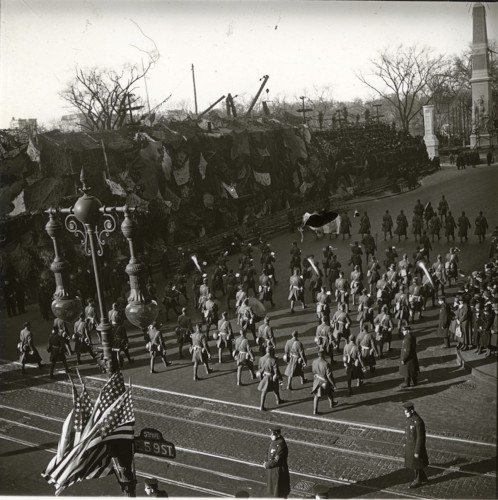
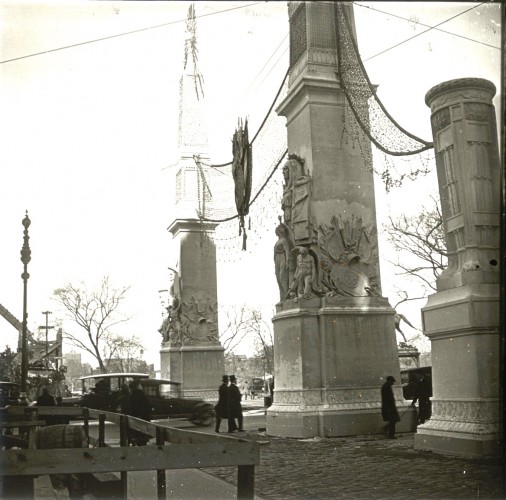
Tribute was paid to the 27th Division’s dead by veterans of the Civil War (more than 500 men, Union and Confederate, were present) and the Spanish American War, who laid a wreath of purple orchids in front of the New York Public Library, at what had been deemed the Court of the Heroic Dead.


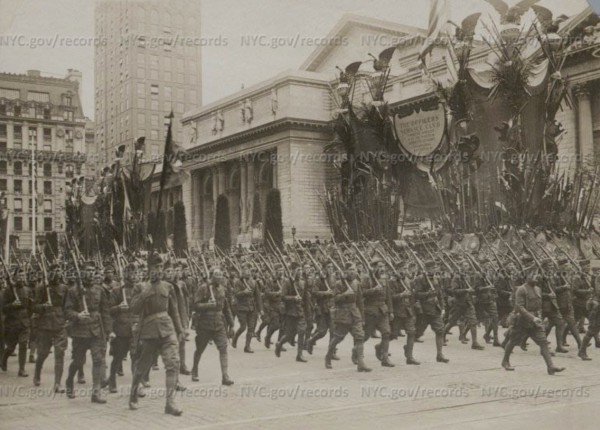
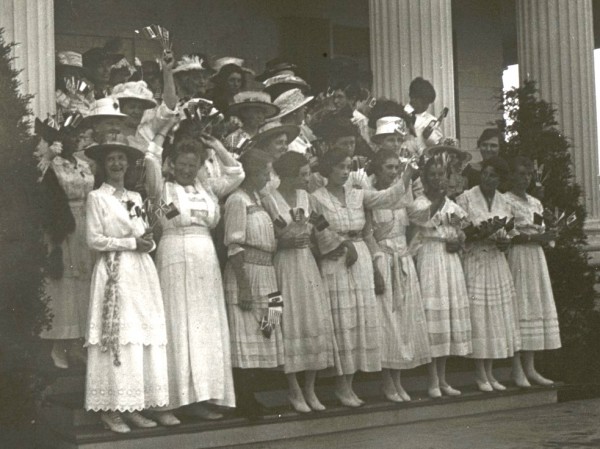
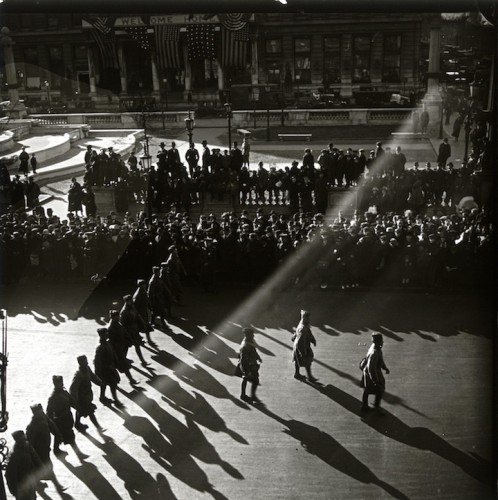
It was quite a day for those who marched and those who cheered. Hopefully these images, which may be unique and perhaps have never been published before, give you a sense of what that day was like, 98 years ago, at New York City’s grand celebration of the end of World War I.
Great Blog Jeff I give it two thumbs up
A fascinating and moving post. Just a clarification on the identity of the building in the photo with caption “THAT THEY SHALL NOT HAVE DIED IN VAIN”. It’s the Metropolitan Museum of Art, not the New York Public Library.
I was puzzled when I wrote this–thanks for clearing this up!
Jeff – great post! Here are three caption clarifications. Photos are at the urls.
First cannon “probably captured”
1.C aption – “An artillery gun. This one may have been captured from the Germans.”
Comment – NOT so. its a US Army M1897 75mm cannon
http://tinyurl.com/lkjgx2h
2. Another gun
Comment – The 3-inch field gun M1902 (76.2 mm), a.k.a. M1904 and M1905, was the U.S. Army’s first nickel steel, quick-firing field gun with a recoil mechanism. Like its predecessor the 3.2-inch gun M1897, it was a rifled breechloader.
Photo of M1905 Howitzer used by Allied Forces in World War I
https://en.wikipedia.org/wiki/3-inch_M1902_field_gun
3. Artillery shells are helmets
New York after the war. 100,000 German helmets sent to U.S. by General Pershing were used to construct huge pyramid at “Victory Way” in New York City to boost the Victory Loan Drive, 1919 You could buy these and help the Victory Loan Bonds….
https://www.pinterest.com/pin/346143921343569741/
http://tinyurl.com/lokh5sc
Thanks for clarifying. Very helpful!
Jeff- Here’s a supplement to your posting on the post-WWI victory parade in NYC. -(April 11th, 2017 in Green-Wood Historian Blog) -It deals with a US Navy recruiting station built in Union Square.
That time NYC built a battleship in the heart of Union Square
https://mashable.com/2015/04/30/uss-recruit/#LkwiaCZ3gPqZ
Wonderful! I learned that Gaston Lachaise was one of the artists included on this Victory Arch. Gertrude Vanderbilt Whitney too. Lachaise copyrighted 2 bas relief plaques in December of 1918: one showing a group of red cross nurses representing various nations and another showing two nurses standing by wounded sailor and soldier. They were likely intended for this temporary structure since nothing was ever seen of these works again.
Thanks for sharing this information. Our knowledge grows!
Thanks for this article. My cousin attended this parade with his wife. I have a lovely collection of negatives showing images similar to the ones in this article, and also the warships in the harbor.
I’ll be posting a few of my images on my IG; I’d love to link to your article if you wouldn’t mind.